Imagine a place known as “The City of Darkness” — a spot so tightly packed that sunlight couldn’t even find its way through the narrow walkways among towering buildings.
Back in the latter part of the 20th century, Kowloon Walled City, nestled within the bustling city of Hong Kong, held the title for the most densely populated area globally. Picture this: over 30,000 people crammed into a space of just 6.4 acres, or around 0.01 square miles, by the late 1980s.
To put it into perspective, the population density soared to more than 3,000,000 people per square mile. Today’s most densely populated city, Manila in the Philippines, pales in comparison with fewer than 120,000 people per square mile.
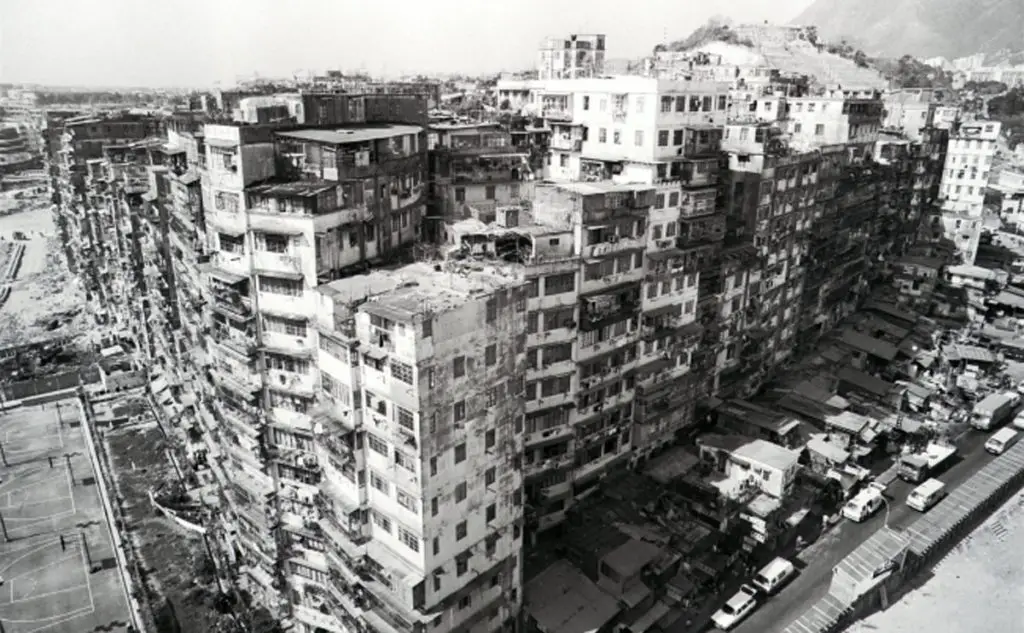
Throughout its history, Kowloon Walled City found itself under the jurisdictional claims of both Great Britain and China, but neither provided much oversight. The place witnessed haphazard growth, both in terms of physical space and population, resulting in a mix of unsanitary conditions, various vices, and law-abiding families, factories, and businesses.
Though it met its end in the 1990s through demolition, the peculiar, vertically stacked village is no more. Yet, the legacy of Kowloon Walled City endures, woven with threads of military history, British colonialism, and Chinese resilience.
The Beginning
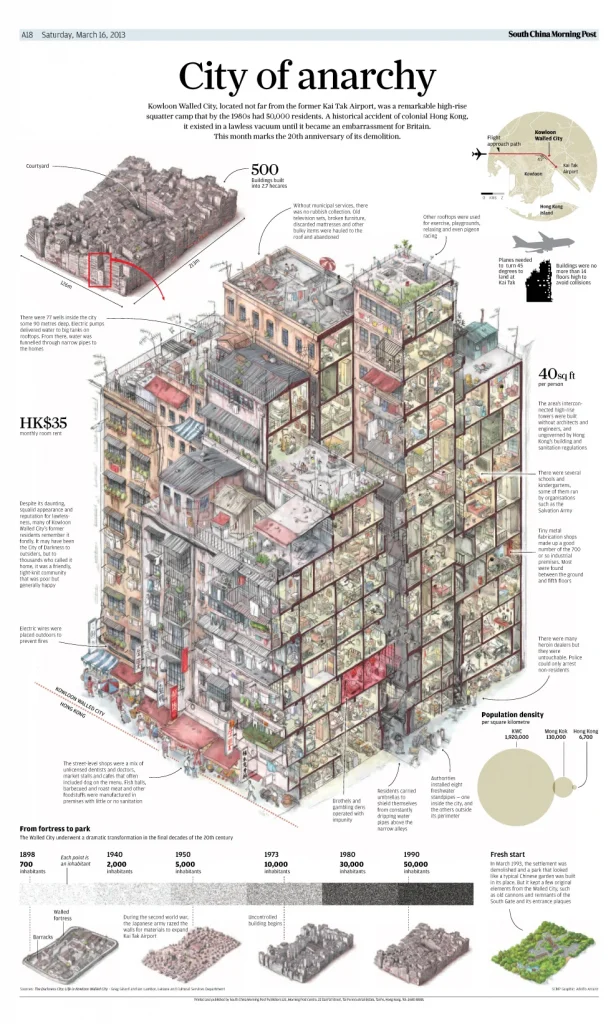
The Kowloon Walled City had its roots in the northeast of the Kowloon Peninsula, situated on the main part of Hong Kong. Its early days can be traced back to the 1660s, when it started as a modest military fort. Over the centuries, the fort remained relatively small. However, a significant change occurred in the 1840s when, after China ceded Hong Kong Island to the British at the conclusion of the First Opium War in 1842, Chinese authorities decided to expand the fort to deter potential British encroachments.
In a span of five years, the Chinese erected an imposing granite wall around the military offices and barracks of the fort, equipping the 13-foot wall with cannons. This transformation officially bestowed upon the area the name ‘Walled City.’ Despite the formidable walls and cannons, they proved insufficient to thwart British advances. The culmination of the Second Opium War in 1860 resulted in further territorial losses for the Chinese during the First Convention of Peking, including a substantial portion of the Kowloon Peninsula.
Territorial disputes between the Chinese and British persisted for decades. In 1898, as part of a 99-year lease, China granted Britain control over the lands of Hong Kong, encompassing Hong Kong Island and most of the Kowloon Peninsula. Notably, the Walled City was excluded from this lease agreement. As per the Second Convention of Peking, China retained control over the fort, provided it did not interfere with nearby British troops.
However, suspicions arose in 1899 when British authorities believed that the Walled City was being used to gather Chinese soldiers supporting resistance against colonial rule. In response, British troops marched towards the fort only to discover that it was nearly devoid of military presence, challenging the initial suspicions.
RECOMMENDED: The World’s Most Spooky Abandoned Houses
The War
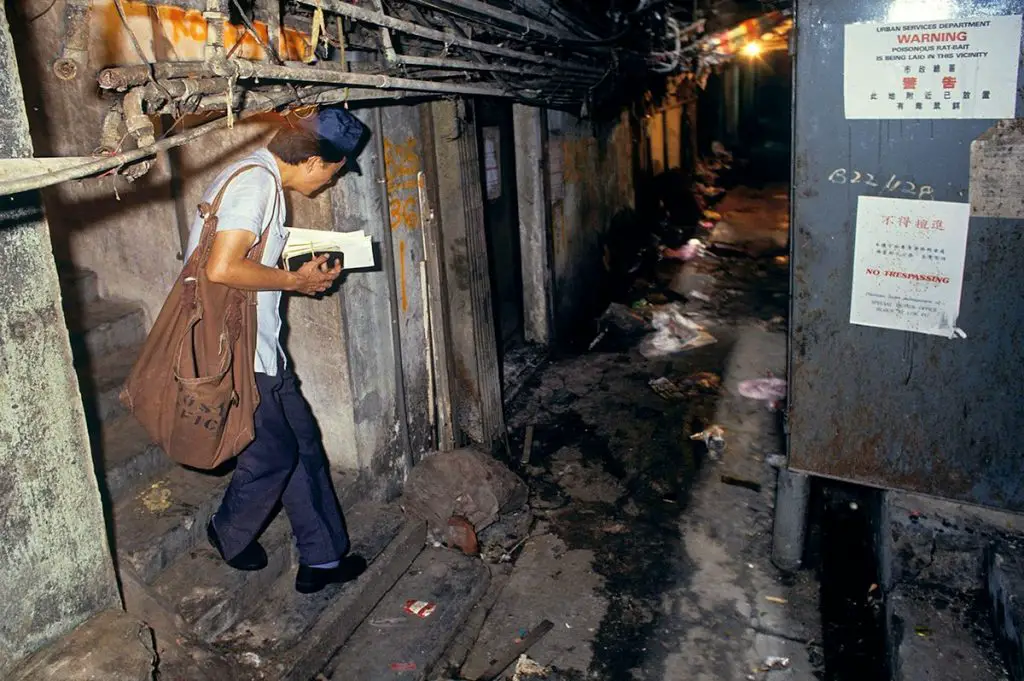
The struggle for control over Kowloon Walled City became a territorial tussle. Following the expulsion of remaining Chinese magistrates, the British essentially staked their claim on the Walled City. Although Chinese authorities never officially acknowledged the unilateral revision of the 1898 treaty, they took no action as British missionaries flooded in to propagate Christianity. Meanwhile, the city began to deteriorate, succumbing to a lack of administrative oversight that transformed it into a slum.
In 1933, the British government in Hong Kong unveiled plans to displace the dwindling population of the Kowloon Walled City—now numbering fewer than 500 residents—to make room for a public park. The Chinese government objected, emphasizing that the settlement still fell under Chinese jurisdiction, even as the city’s buildings continued to crumble.
Control of the city remained a source of tension for many years. During World War II, when the Japanese occupied the area, they dismantled the walls, using the worn and broken stones as construction material for the nearby Kai Tak Airport. After the war, Hong Kong experienced an influx of refugees who settled in the now-devoid-of-walls Walled City.
Coming to an end
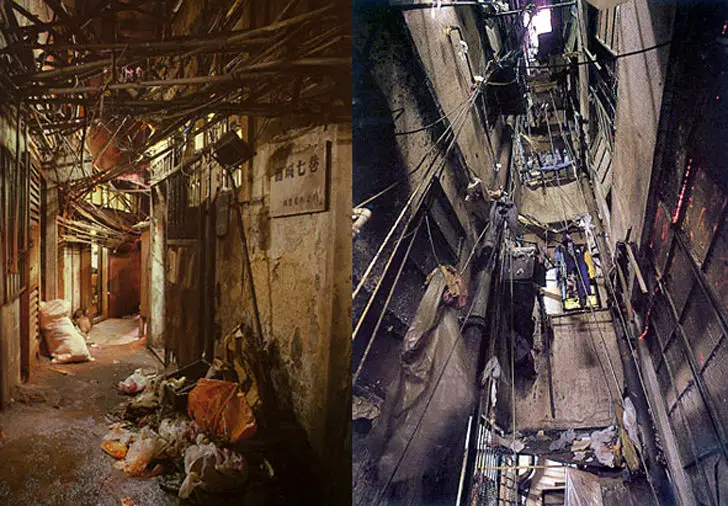
The captivating yet perplexing tale of the stacked city in China unfolded as of 1947, with approximately 2,000 residents dwelling in the Kowloon Walled City. The local Hong Kong government grew increasingly dissatisfied with its descent into a slum-like state. Governor Alexander Grantham bluntly characterized it as “a cesspool of iniquity, with heroin divans, brothels and everything unsavory.”
In January 1948, Hong Kong officials and police descended upon the city to evict squatters, and within a week, a return visit aimed to clear out any remaining tenants. The intervention led to a riot, prompting Chinese authorities to affirm their continued jurisdiction over the city. In response, Hong Kong authorities adopted a more hands-off approach to the community’s affairs.
Over the subsequent decades, the population of the Kowloon Walled City surged. However, concerns and conflicts within the community escalated without the usual rules, regulations, services, and infrastructures found in typical cities. Amidst the chaos, there were no taxes, sanitation standards, or licensed healthcare providers and police presence was notably absent.
The traditional “triad” gangs established strongholds in Hong Kong’s Walled City, turning it into the focal point of the city’s narcotics trade. Prostitution thrived, unlicensed medical practitioners and dentists proliferated, and a multitude of restaurants, food stalls, shops, and family-run factories emerged.
The city’s water and power supplies were inadequate and unsafe. By the late 1980s, the community relied on just one postman and two elevators, a challenge given the city’s vertical growth, ingeniously stacking tiny living spaces on top of each other. At its zenith, the Walled City boasted around 350 buildings, typically 10 to 14 stories high, housing approximately 10,000 households.
While some scholars argue that there were attempts at municipal planning to alleviate the city’s chaos, it is evident that most of these plans were never put into action.
What happened?
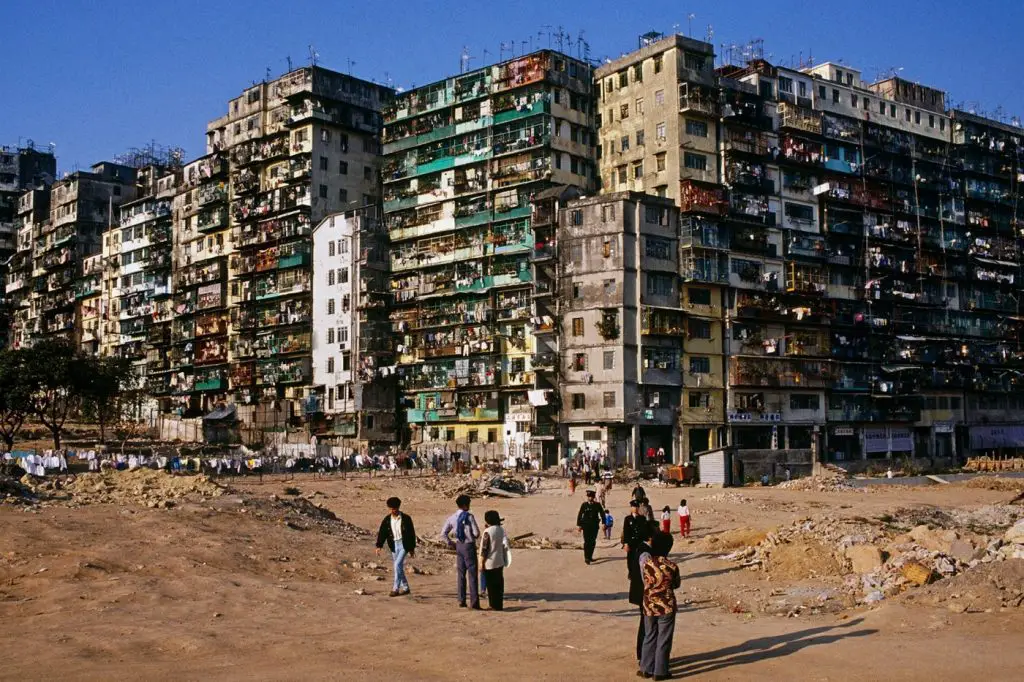
The fate of the Walled City of Kowloon took a turn as its conditions lagged further behind its surroundings, sparking discussions about demolition. In 1963, a proposal to tear down the city faced swift resistance, but in 1987, a more covert plan gained momentum. Hong Kong authorities quietly compensated residents and business owners to vacate the Walled City, amounting to a total of $2.76 billion.
This time, Chinese authorities were receptive to the idea of constructing a public park in place of the Kowloon Walled City. With China poised to regain control over the rest of Hong Kong in 1997, there was no opposition from the government to its demolition.
By the end of 1991, only a few hundred residents remained, and in the following summer, riot police forcibly removed those who resisted leaving. The demolition began on March 23, 1993, with wrecking balls taking their toll for about a year. On December 22, 1995, the Kowloon Walled City Park opened in its stead.
Today, the legacy of the Kowloon Walled City endures through the works of artists, authors, and photographers who dedicated themselves to documenting the city and its unique community. Filmmakers, including director Christopher Nolan, drew inspiration from its cramped chaos for fictional portrayals. In “Batman Begins,” Nolan based a densely populated neighborhood on the city’s claustrophobic layout. Various video games also pay homage to its intriguing history.
Yet, beyond showcasing the anarchic architecture, these records reveal a peculiar, isolated world—a crime-ridden yet resilient community forgotten by the competing forces that sought control over it.
RECOMMENDED: Abandoned Since The 1940s – Italy’s Iconic Valley of Mills